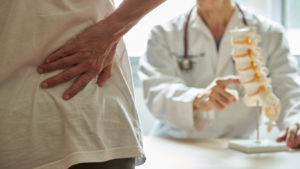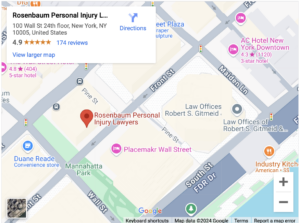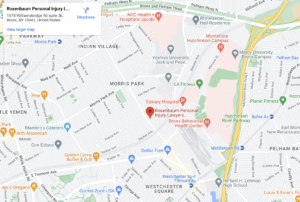Back Injuries

A back injury can change your life. A back injury can compress or sever the spinal cord, causing pain or even paralysis and death.
Worse yet, a back injury can cause or accelerate degenerative back diseases. This can cause your back injury to worsen over time rather than heal.
Unfortunately, back injuries are a common occurrence. With this in mind, here is a quick guide to back injuries and the compensation you can seek for them.
Table of Contents
How Does a Back Injury Happen?
The back refers to the posterior side of the torso. It contains muscles, tendons, ligaments, and bones, like the vertebrae and ribs.
The vertebrae each include a cylindrical body and wing-shaped processes. The vertebrae sit on top of each other. A disc sits between each pair of adjacent vertebrae, cushioning them. The vertebrae and discs form the spine. The gaps between the processes and body of each vertebra align to form the spinal canal.
The spinal canal protects the spinal cord. Sensory signals pass from the body to the brain along the spinal cord. Motor signals pass in the opposite direction. When a back injury causes nerve damage, these signals can get disrupted or interrupted.
Back injuries happen when these structures sustain damage. Back injuries can result from trauma, overuse, disease, or a combination of these factors.
Traumatic back injuries usually happen due to:
Penetrating Back Injuries
Penetrating back injuries happen when an object penetrates the skin and enters the back. A penetrating object can sever or tear muscles, tendons, ligaments, blood vessels, and nerves.
Penetrating injuries can happen in almost any accident. A piece of metal or glass could get driven into your back during a motorcycle accident. You could fall onto a tool blade that penetrates your back in a workplace accident.
Blunt Force Back Injuries
Blunt force injuries happen when a force impacts the back without penetrating the skin. Blunt trauma can break bones, stretch or tear soft tissue, and crush discs. Blunt injuries can happen in car accidents, falls, and other accidents where your body collides with something.
Acceleration/Deceleration Back Injuries
The construction of the back makes it susceptible to injuries caused by acceleration and deceleration. In these injuries, an object does not need to collide with your back.
Instead, acceleration forces on your body cause your vertebrae to hyperextend, then rebound. An example of an acceleration/deceleration injury is whiplash.
The hyperextension can stretch or tear muscles, ligaments, and tendons. It can also allow discs and vertebrae to slip out of place. As the spine rebounds, the force can fracture vertebrae and crush discs.
What Are Some Examples of Back Injuries?
The back contains many structures, and any one of them can get damaged in an accident.
Some examples of traumatic back injuries include:
Back Strain and Back Sprains
Strains happen when the muscles and tendons stretch or tear. Tendons anchor the muscles to the bones. Muscles and tendons provide strength and movement to your back.
Sprains happen when the ligaments stretch or tear. Ligaments connect bones. They provide stability to your back and hold the bones in place.
Your back includes large muscles anchored by tendons to the ribs, shoulders, and spine. The vertebrae connect through ligaments. These muscles, tendons, and ligaments can stretch and tear from penetrating, blunt, or acceleration/deceleration injuries.
Symptoms of a back strain include:
- Pain
- Inflammation
- Swelling
- Limited range of motion
- Weakness
- Muscle spasms
Symptoms of a back sprain include:
- Popping at the time of injury
- Pain
- Inflammation
- Bruising
- Back instability
Doctors usually prescribe rest, ice, and anti-inflammatory drugs for back strains and sprains. You may also undergo physical therapy to build muscles surrounding the injury to better support your body.
Doctors rarely operate to treat strains and sprains, even when the tissue tears completely.
Fractured Vertebrae
Penetrating objects, blunt forces, and stress from acceleration and deceleration can fracture the vertebrae. A vertebra with a fractured body can become unstable since the body bears much of your weight.
A vertebra with a fractured process can slip out of place. Ligaments attach to the processes and hold the vertebrae in place. When a process fractures, the ligaments cannot keep it from slipping.
Bone fragments from a fractured vertebra can migrate into the spinal canal. There, the bone fragments can compress or sever the nerves of the spinal cord.
Injured Disc
The discs have a fibrous exterior that surrounds a gel-like interior. Discs can lose their structural integrity. This might happen due to an injury, particularly an acceleration/deceleration injury that crushes the discs. It can also happen as a result of natural degeneration with wear and tear over time.
Injuries can trigger or accelerate disc degeneration. If the structure of the disc gets damaged, the body’s weight can cause this damage to worsen.
A herniated disc happens when the interior protrudes through the fibrous exterior. The protrusion can press on the spinal cord.
A bulging disc happens when the disc collapses but maintains its outer shell. Instead of a cylindrical shape, the sides bulge to create a barrel shape. The bulging sides can press on the spinal cord.
Spinal Cord Injury
Spinal cord injuries happen when the nerves of the spinal cord get compressed or severed. Bone fragments, displaced vertebrae, and damaged discs can cause spinal cord injuries.
At worst, spinal cord injuries can cause temporary or permanent paralysis. Less severe spinal cord injuries can cause:
- Pain
- Muscle weakness
- Numbness or tingling
- Loss of coordination
- Loss of bladder or bowel control
The location of the spinal cord injury will often determine where the symptoms occur. An injury in the cervical spine of the neck will often cause symptoms in the fingers, hands, wrists, arms, shoulders, and neck. An injury in the lumbar spine of the back will often cause problems in your feet, ankles, knees, legs, and hips.
What Compensation Can I Recover for a Back Injury?
When you suffer a back injury due to someone else’s negligence, you can seek compensation to cover your medical expenses and lost income. A severe back injury could require extensive medical treatment and therapy. You might also need to miss work while you recover from your injury.
Your damages will cover both your current and future losses. If you have suffered a permanent injury, you could suffer losses for the rest of your working life.
Contact a New York City Personal Injury Lawyer for Help
To discuss the compensation you can seek for your back injury, contact Rosenbaum Personal Injury Lawyers for a free consultation. Our New York City personal injury lawyers will examine your case and explain your options for recovering compensation. We are standing by to take your call at (212) 514-5007.



